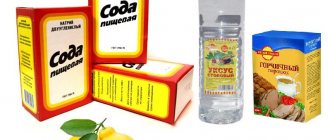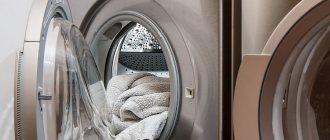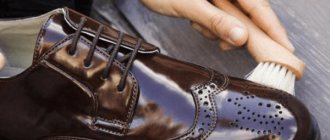In life, you often have to deal with solving non-trivial problems. You have to figure out, for example, how to polish a badge on a soldier’s belt to a shine or put in order a fairly tarnished horn. Sometimes it becomes necessary to polish Soviet-era copper coins. Perhaps for this you will need to look for a hardware store or friends among conscripts. The cleaning product can be purchased in the online store. But you can try to prepare an analogue of asidol with your own hands.
Asidol M: description, use, composition, methods of cleaning metal
In the life of any person, a situation may arise when you need to quickly polish copper collectible coins to a shine, polish a plaque on a belt, or remove dirt and grime from some metal surface. In such cases, the product “Asidol” labeled M will help.
- Description
- Application
- Compound
- How to clean metal products?
Description
This product is an oily liquid. Most often it is sold in small bottles with a spray. It can be white or dark brown, depending on the quality of purification and processing of the original substances.
The product evaporates quickly, causing the room to fill with an unpleasant, pungent odor in a matter of minutes. It is caused by the fact that the product contains active detergent additives.
"Asidol-M" is obtained by treating oil waste with sulfuric acid.
Asidol-M
"Asidol-M" can not always be found in stores. Therefore, the product is often replaced with improvised substances. Among them:
- toothpaste or tooth powder dissolved in water;
- liquid hand soap mixed with surface cleaners;
- soda dissolved in a small amount of water to make a paste;
- water remaining after boiling potatoes.
Application
The product contains components that allow it to be used for cleaning many products. With the help of "Asidol-M" you can:
- Polish items made of non-ferrous metals and stainless steel to a shine.
- Clean items coated with chrome or nickel.
- Remove dirt and tarnish from jewelry made from precious metals.
- Remove the blackened layer from silver items.
- Wipe the surface of the coins. It must be borne in mind that the chemical composition can only be used to remove contaminants from modern specimens. Asidol-M is not suitable for old metal money. It contains many active abrasive substances that can damage a rare coin. Micro scratches on light metal money can be polished out. But if you clean the yellow ten-ruble coins that are currently in use with the substance, they will acquire an unpleasant rusty color.
"Asidol-M" is completely unsuitable for cleaning aluminum products. Also, it cannot be used on painted items.
Compound
The main chemicals contained in this cleaner are monobasic carboxylic acids and mineral oils. “Asidol-M” also contains salts of sodium naphthenic acids, surfactants, abrasives harmless to humans, ammonia and synthetic wax.
If a product similar to Asidol-M was created at home, then the mixture may contain:
- baking soda mixed with dishwashing detergent;
- hydrogen peroxide and ammonia;
- acetone, potato broth and vinegar.
How to clean metal products?
The use of any chemical substance, including Asidol-M, requires compliance with safety regulations.
The product should be used in a well-ventilated area so that the person does not feel sick from the strong odor.
Before work, wear rubber gloves to prevent irritation from the chemical composition on the skin of your hands. Only when following precautionary measures do they begin to clean the products:
- Before starting work, you should prepare everything you need: several dry, clean pieces of soft cloth, rubber gloves, a sponge, a microfiber cloth.
- The surface of the metal item to be treated is wiped with a cloth until the item is completely dry. In the presence of humidity, the abrasives contained in Asidol-M will not work. After this, it is not recommended to use the fabric again.
- The product is placed on a flat horizontal surface.
- Shake the bottle with the product vigorously and then open the lid.
- The product is applied to the entire surface of the product using a small sponge.
- After waiting 1-2 minutes, clean the item with a soft toothbrush.
- The product is wiped with another piece of cloth.
- The remaining product is washed off the item under running cool water. If necessary, clean off the product with a toothbrush.
- The product is repeatedly wiped with a cloth and polished with a microfiber cloth.
- If it is not possible to remove all contaminants at one time, then repeat the cleaning procedure.
Despite the fact that Asidol-M is sold only in specialized stores, the substance is popular among ordinary users. The miraculous properties of the product allow you to quickly get rid of dirt on different surfaces. In addition to numismatists, the product is used by people working in dirty industries and collectors of metal objects.
» Articles » Asidol what is it
Asidol-M is a popular tool for cleaning coins; one of the advantages is that it is quite cheap, it really does a good job of cleaning coins and other metal surfaces, but it has some features, which we will look into below.
The cleaning agent Asidol-M appeared quite a long time ago; during Soviet times it was popular in the army for cleaning belt buckles and brass buttons on military uniforms. Since the 80s, after the transition to plastic buttons instead of brass, it became less popular in the army.
It got its second life from collectors for cleaning coins.
https://www.youtube.com/watch?v=BX3ac_nn0bo
Asidol is a liquid mass with an abrasive material that has a pungent odor of ammonia. If you do not use it for a long time, the abrasive material will precipitate, so the bottle must be shaken well before use.
Well suited for cleaning modern bimetallic, nickel alloy and copper coins. You can clean gold and silver coins. Excellent for cleaning jewelry made from the metals listed above.
Cannot be used with objects made of aluminum and its alloys. Sold under the name Asidol - M or Asidol-M, packaged in plastic bottles weighing 100 grams, has an unlimited shelf life, produced in Russia.
The product may contain ammonia, we recommend working with gloves; if you are intolerant, you can protect your respiratory system.
Since Asidol is a polishing paste, it can restore shine to many coins and objects, but it should be understood that this will not return the stamp shine, and micro-scratches will definitely remain on the coins, not visible to the naked eye, but visible using a regular magnifying glass, so the value of the coins will drop .
This product cannot be used for valuable and expensive coins, as well as coins of PROOF quality, as they can easily be damaged. Excellent for ordinary walking coins removed from circulation or dug up from the ground.
Everyone uses this product differently, some soak coins in it, others polish them with it. According to the instructions, a small amount of asidol should be applied to the surface to be cleaned, wait until it dries and then wipe with a cloth.
We recommend using this method only with additional rinsing with distilled water to wash away the remaining substances from the various cavities of the coin. You can wash it under a flow, but water stains may remain; you must immediately wipe it with a dry soft cloth.
There is no point in soaking and rinsing coins in it; it is easier to rinse coins in an ammonia solution, the effect will be the same. If the coin is from the ground and is very dirty, you can clean it with a special brush.
After cleaning, it is possible that the coin may turn white, this is due to the presence of ammonia, which will dissolve all the oxides on the surface of the coin; over time, the coin will again be covered with oxides and return to its attractive appearance, but the process can be quite long. You can speed it up by placing coins in the open air and sun.
We do not recommend coating with sulfur ointment or other chemicals, since cabinet patina is always more attractive than chemical patina.
The result of cleaning coins with Asidol
Let's conduct a test on Soviet coins. Let's take two Soviet kopecks and clean one of them. We cover the coin with the composition, stirring it well, you can see how the coin immediately begins to brighten.
You don’t have to use cotton swabs, just rub it with your hands, preferably with gloves, or use a soft cloth.
After the solution has dried, wipe it with your fingers or a soft cloth, then rinse it in running or distilled water, since residues of asidol may remain in the recesses of the coin.
We get this result. As you can see, the coin has been cleaned quite well, if the result is not satisfactory, you can repeat the cleaning, no particularly terrible scratches appeared, but the coin has brightened greatly, if you do not treat it with anything additional, then in about two or three months it will darken and become covered with patina.
homychok.ru
Properties and features of use of "Asidol M"
"Asidol-M" is a product for cleaning metal products, including nickel and copper, but with the exception of aluminum and painted objects.
It is a white liquid containing surfactants, an abrasive component and additives.
It is used by numismatists, as well as collectors of antique metal items to clean coins from oxidized film on the metal, dirt, grease, and sometimes a layer of corrosion.
articles
- Application
- How to clean metal products?
- Conclusion
Conclusion
The tool described in the article is used for modern coins and other items made of metals and their alloys. For rare coins of ancient times, the use of the product is strictly prohibited due to the possibility of damage to the surface by abrasives.
How to make asidol with your own hands
In life, you often have to deal with solving non-trivial problems. You have to figure out, for example, how to polish a badge on a soldier’s belt to a shine or put in order a fairly tarnished horn.
Sometimes it becomes necessary to polish Soviet-era copper coins. Perhaps for this you will need to look for a hardware store or friends among conscripts. The cleaning product can be purchased in the online store.
But you can try to prepare an analogue of asidol with your own hands.
Time-tested traditions
In people’s associations, the concepts “GOI paste”, “mirror shine” and “army plaque” are located side by side. It’s not surprising, since it was invented in the 30s. of the last century, the composition helps to shine the shine on the belt plaques of generations of defenders of the Fatherland.
This paste (not Goya, in honor of the Spanish artist Francisco Goya, but GOI, named after the State Optical Institute, where the technology for preparing a preparation originally intended for polishing lenses was developed) will please you with its price. The cost varies from 300 to 500 rubles per kilogram, and a small jar can be purchased at Leroy Merlin or Voentorg for 50 rubles.
There are four different options in which GOI paste is presented. The application depends on the tasks facing us. Paste No. 4 will be useful in cases where you need to rub out scratches on the material, giving the surface a matte tint.
The paste is convenient to use, for example, when you need to thoroughly clean fireplace grates. Paste No. 3 gives a finer surface treatment. However, if you are interested in a truly mirror-like shine, you will opt for No. 2 or 1.
How to make asidol with your own hands - Metalist's Handbook
Surely a couple of months ago you didn’t even think about how to clean the plaque, but the harsh reality of everyday life in the army taught you that this piece of metal should shine with its pristine shine. What methods have soldiers used to do this over the years, and can they be used for non-military belt buckles? Let's find out!
How do they clean plaques in the army?
There is no special time, desire, or even opportunity to use sophisticated methods of cleaning plaques in the army using folk remedies or expensive specialized chemicals, so you can clean the plaque either with what they give you or with what is at hand.
The leader in popularity - also because the army usually gives it out for free - is GOI paste, developed back in the 40s, which is based on abrasive chromium oxide powder. The paste is very dense and green in color. It is used not only for cleaning plaques, but also for polishing any other metal surfaces, depending on the size of the abrasive.
Also popular is the “Asidol M” product, which is now often used by numismatists to clean found coins. This product is already whitish in color, is a petroleum product and works rather by corroding the oxide layer than by scraping it off with an abrasive.
Well, the most popular material at hand is tooth powder or toothpaste, which also contain abrasive particles. True, polishing with paste will take a little more time: the abrasive in it is very fine, so now it will take longer and harder.
Advice
To thoroughly clean the space inside the star, the army usually uses a used toothbrush or even a needle for particularly difficult places.
How to properly clean a plaque with GOI paste?
Since GOI paste is the most popular of all products, let's start with it. To begin with, we note that if there are deep scratches on the plaque, the green dense paste will clog into them, making the plaque, although shiny, but with green stripes.
If there are no scratches, then do the following:
- take a piece of felt or felt and paste;
- apply the paste to the fabric;
- polish the plaque for a couple of minutes
The cleanliness of GOI paste lasts a long time, and the shine is dazzling, just as you wanted!
By the way
Now they sell ready-made felt polishing wheels with GOI paste, which is very convenient, but more expensive.
How to clean a soldier's badge?
If you are not in the army and GOI paste is not at hand, you will have to look for alternative methods of giving the plaque its original appearance.
- "Asidol." Traditionally, it is applied to the same felt and used like GOI paste, but now you won’t find Soviet-style “Asidol” during the day, and “Asidol M” should be used a little differently: apply the paste in a thin layer on the plaque, wait about a minute, polish , while simultaneously washing the paste with lint-free material: felt, felt, or even lint-free cleaning wipes. The surface after this treatment becomes noble-matte, but the cleanliness, judging by the reviews, does not last as long as we would like.
- Toothpaste and tooth powder. The principle with them is the same as with GOI paste, but in the absence of felt on hand, you can use a regular toothbrush.
- A paste of soda and vinegar can also help get rid of plaque; it will simultaneously work as an abrasive and due to the corrosive ability of vinegar.
- You can wipe the plaque with acetone or ammonia. The main thing is not to leave the metal under their influence for too long, otherwise the product may deteriorate.
- If the oxide layer is practically absent, but the plaque lacks freshness and shine, you can clean the buckle with ordinary alcohol or peroxide. Of course, you won’t be able to polish the plaque with them, but they will work as an express remedy.
- You can also write down the recipe for the solution: mix water and peroxide 1:1, add a little ammonia to the mixture and soak the plaque in the solution for about 10 hours. Wipe, rinse - and it will be as good as new!
- In addition, help can be found in household chemicals. Suitable products for washing sinks, both in the form of cream and powder, or liquids to add shine to the stove.
- They say that boiling the plaque in potato broth or a saturated solution of citric acid for about an hour helps a lot.
- If you don’t mind the money at all, then you can use a liquid for cleaning precious metals or even take the product to a jewelry workshop, where the plaque will certainly be cleaned perfectly.
Advice
In fact, any product with an abrasive will help you properly polish the plaque and give it shine. It is only advisable to use industrial products: if you want to use, for example, an abrasive made from sugar, salt or sand, scratches on the plaque cannot be avoided.
Is it possible to clean a regular belt buckle using these methods?
But it's not just soldiers in the military who have to clean plaques on belts: what happens if you try one of these methods on your belt buckle?
If the buckle is made entirely of metal, then any of these products will really help remove the oxide layer and restore its former shine. But most belt buckles are now simply chrome-plated or coated with multi-colored enamel.
It is impossible to clean such products using the above methods due to the risk of scratches and damage to the enamel, and it is unlikely to be necessary: enamel and chrome will not become victims of oxide deposits. At most, ordinary dirt can accumulate on them.
Now that you are fully armed, cleaning an army badge will seem like a trifle, and you certainly won’t be sent to the outfit because of a dull piece of brass that smells green.
How to make asidol
“Asidol” is a coin cleaning liquid containing detergents and mild abrasives, thanks to which it cleans the surface of iron products (jewelry, coins, antiques). Has a pungent odor.
The product cleans items made of stainless steel, non-ferrous and precious metals, polishes their surface to a shine. Also suitable for items coated with a layer of nickel and chromium. But the liquid is not suitable for cleaning painted and aluminum products. A bottle weighing 120 grams costs about 100 rubles.
Shelf-life Unlimited.
“Asidol” marked “M+”, in addition to surfactants and abrasives, contains ammonia. Both products are made in Russia.
The funds are used to a greater extent by coin collectors (numismatists). Water greatly simplifies the cleaning function of modern bimetallic copper-nickel coins.
Some rare coins, issued in limited editions, are valued much higher than their face value.
To clean them from grease and dark deposits, dirt, both products are used.
Coin cleaner
- You can ask any question you are interested in about the product or the work of the store. Our qualified specialists will definitely help you.
- We offer truly cheap and convenient delivery options! Our couriers will find you anywhere in Russia. The maximum delivery time is one week for the most remote regions.
Express delivery
Courier delivery covers the entire territory of Russia and the CIS countries.
Delivery in Moscow is carried out for orders over 1000 rubles and for a period of 1-3 days. The cost of delivery in Moscow within the Moscow Ring Road is 350 rubles. Delivery beyond the Moscow Ring Road is 350 rubles + each subsequent kilometer 15 rubles.
In order to find out the cost of delivery to regions of Russia and CIS countries, add the product you like to the cart and indicate the exact address.
- When ordering over 30,000 rubles, delivery throughout Russia is free
Attention!
If you decide to refuse the goods for one reason or another, delivery is still subject to payment.
Mail delivery
Sending by Russian Post is carried out to any region and country of the CIS.
This delivery method is only possible if the total weight of the order does not exceed 20 kg, or it can be divided into several shipments. According to the resolution of the Ministry of Communications of the Russian Federation, Russian Post charges 18% VAT for shipment. This amount is included in the shipping cost.
Parcel machines
Many large shopping centers have parcel terminals - boxes that resemble storage lockers. Detailed instructions will help you pick up your parcel with ease. When ordering, simply select the appropriate delivery method and parcel terminal address - and we will deliver your purchase to the terminal closest to you.
Restrictions for this delivery method
:
- The weight of the order with packaging is no more than 15 kg.
- Dimensions of the parcel - no more than 34x38x58 cm.
- Maximum purchase amount - 40,000 rubles
Transport companies
You can arrange delivery by a transport company. Choose the one that is in your city and the parcel will arrive at the specified delivery point. Orders are issued on weekdays from 9 a.m. to 6 p.m. only upon presentation of an identification document.
We work with all transport companies and are ready to send goods in a way that is convenient for you; it is also possible to send goods by passing transport. Our specialist will tell you details about the timing, cost and method of delivery.
Order pick-up points
We can deliver your order to any of 2,200 delivery points. When placing an order, select a pickup point convenient for you. To receive the parcel, just provide the order number, which we will send to you via SMS.
Pickup
You can pick up your order yourself. To do this, you need to come to one of our retail stores:
m. "Salaryevo", st. Sholokhov, property 2A.
Pickup hours: daily 09:00-20:00. Tel.
Delivery to other countries
Delivery abroad is carried out by the following services
:
- EMS
- TNT
- DHL
- Spring Global Mail
- DPD
- GloBel 24
- Alem TAT
Details of delivery and payment for the order will be clarified by our manager when placing the order. Taxes and duties may be charged by customs in the receiving country.
Attention!
Postal delivery is carried out only with 100% prepayment.
Payment Methods
Paying for our purchases is not only convenient, but also profitable! We provide our regular customers with discounts on all product groups.
Cash payment
You can pay for your purchase in cash in our stores, as well as upon receiving your order from the courier. Upon payment, you will receive all documents confirming the purchase.
Cashless payments
You can pay for goods with a bank card when purchasing in a store. When placing an online order, you can transfer an advance payment to our bank account using the details below.
Name of organization:
Savay LLC
Legal address: 119415, Moscow, Leninsky Ave., 110, building 1, room. II, room I Fact. address: 119634, Moscow, st. Sholokhova, vl. 2A Calc. account 40702810938000190801 PJSC SBERBANK Cor. account 30101810400000000225, BIC 044525225 INN 9729203661, checkpoint 772901001
Here you can receive payment receipts for your order at the Savay store: Receipt form for payment for your Savay store order.
Attention!
Your payment may take up to 3 business days to reach us. We will dispatch the order as soon as we receive confirmation of payment.
Payment by electronic money
We accept payments from electronic wallets: Yandex Money, Webmoney, Qiwi and others. It is enough to select this payment method when ordering.
Asidol: what is it for and how to use
It often becomes a dilemma to find out how to polish copper coins, a plaque on a belt or a piece of copper furniture to a shine. Asidol, which can be purchased in online stores or made independently, allows you to rub the product without leaving streaks.
What is Asidol and why is it needed?
This is a cleaning agent that is used to clean various metal products (most often nickel and copper). But this cleaning agent is prohibited from cleaning products made of aluminum and painted to resemble other metals. This product is a white liquid.
Composition of the cleaning product
The composition of the purchased drug includes such chemical components as:
- carboxylic acid;
- mineral oils;
- sodium salts of naphthenic acids;
- surface active elements;
- abrasives that do not harm the human body;
- ammonia;
- wax of synthetic origin.
Application of Asidol M
This type of household chemicals is popular among soldiers undergoing military service and among the military; This product is used to clean the plaque on a military belt. This product was made at the beginning of the last century. There are several variants of asidol, which are classified according to their intended use.
Paste marked 4 is used in cases where it is necessary to rub out a scratch on the metal and give the surface of the product a matte tint. This type of paste is used to clean the fireplace grate. Paste marked 3 processes a thinner metal product. To make the product shine like a mirror, use paste marked 1 and 2.
This product is used mainly for polishing items made of non-ferrous metals, for cleaning chrome-plated and nickel-plated items, and is suitable for removing dirt and darkening of jewelry made of precious metals.
Coin cleaner Asidol M is used by collectors of various coins. Only this paste is capable of cleaning and maintaining the collection in good condition without causing harm; it allows you to polish even minor scratches, but only on coins made of silver-colored metal.
How to clean a soldier's badge with Asidol?
Cleaning the plaque is a kind of soldier’s ritual, to which a large amount of time and effort is devoted. The use of Asidol paste does not harm the product and brings the desired result. To clean this item, you must follow these instructions:
- Before the procedure, you should carefully inspect the belt; If there are scratches on the fastener, it is better to sand them down first, since if the paste gets into the grooves, it can give the product a greenish tint.
- Take a small piece of natural felt and a small amount of paste.
- To clean the plaque, apply the composition to a felt flap in a small amount.
- Start rubbing the belt buckle with sanding movements until the scratches are removed, and then until completely clean.
- The procedure will be completed when you can see your reflection in the plaque, which is an extremely important indicator in the army.
How to make asidol with your own hands?
In order to make such a cleaning product at home, you can use various combinations of substances. For example, the simplest thing is tooth powder, which is applied to a moistened brush and with which the product is polished to the desired state.
The second popular home method for cleaning small dirt from a metal surface is a mixture of baking soda and dishwashing detergent.
The composition must be applied to the surface of the item, rubbed and rinsed off, and then wipe the item dry to avoid streaks.
An effective remedy is a mixture of hydrogen peroxide, water and ammonia. Peroxide and water are taken in a 1:1 ratio, and ammonia is added in a small amount. Use the resulting mixture to lubricate the contaminated object and leave it overnight, after which you must wipe it dry with felt.
A mixture of acetone, ammonia and heated acetic acid is often used. But these products are dangerous to use and after prolonged contact with a metal product they can damage it. In order to clean silver jewelry, a decoction of potatoes is suitable. You need to immerse the product in a hot broth for half an hour, then rinse and wipe dry.
The paste is produced either in the form of solid bars or in a container in the form of a viscous mass. Therefore, before starting work, the paste should be softened. Machine oil is used for this. You should break off a piece of paste and apply a few drops to it. The resulting mixture is stirred.
After achieving a homogeneous consistency, the paste can be used. To do this, it is applied to a cloth that will be used to process the metal product. For metal processing it is better to use felt. To obtain the best effect, contaminants must be removed from the metal surface.
Before starting work, a cloth should be soaked in gasoline. Then apply 2 drops of machine oil to the metal surface and polish with light circular movements, adding oil dropwise.
When polishing, do not make sudden movements or press hard on the surface - this can lead to deformations and scratches. Polish until shiny.
After completing the work, rinse the metal product in kerosene to remove any remaining paste.
Is it possible to clean a regular belt buckle using these methods?
This type of cleaning is suitable for cleaning buckles on regular men's and women's belts. In cases where the buckle is made entirely of metal, there are no contraindications to the use of the product. Cleaning will not only add shine, but also remove the resulting oxide layer.
It is worth taking a close look at the belt, since if the chrome plating is of poor quality, the product cannot be cleaned with similar means, otherwise additional damage will occur and the coating will be partially or completely removed. Chrome or enamel does not accumulate oxide deposits, but only dirt, which can be easily removed with a wet sponge.
Polishing plexiglass with your own hands: affordable methods
How to polish plexiglass? Can this be done without contacting specialists? What do you need to purchase in advance to carry out the process as quickly and without any problems? What problems does polishing solve? The answers to these and other questions are in this article.
Organic glass (sometimes called plexiglass) is a polymer material that is particularly durable and hard. Transparency is 2.5 times higher than that of ordinary glass. Light rays are not distorted as they pass through. The material itself produces virtually no haze.
An additional important advantage is resistance to mechanical shock. Thanks to it, plexiglass is widely used for the manufacture of display cases, office partitions, doors, car windows, portholes, microscopes, aquariums, etc. But with all the undoubted advantages of the material, it is not without some disadvantages.
Small cuts and cracks appear on its surface due to contact with foreign objects and substances. If you really want to, you can scratch it. The presentable appearance is lost, the performance and consumer qualities of the product deteriorate. Polishing the plexiglass will help restore them.
The work is painstaking and requires a certain perseverance and perseverance, but the result is worth it.
The main condition is that chemically active, aggressive preparations containing large volumes of abrasive substances should not be used.
This is the answer to the question for those who are interested in whether it is possible to polish plexiglass with Asidol? Theoretically, everything is possible. In practice, the surface will become cloudy, dull, and new cracks and scratches will appear on it.
Asidol is designed specifically for polishing metal, jewelry and antiques, including nickel and copper.
If the label says “Asidol M”, the composition contains ammonia. And this component has a destructive effect on the structure of organic glass. The surface will not be transparent and shiny, but “dirty.”
What you need for work
The easiest and fastest way to polish plexiglass is on special production equipment: special machines with metal discs and polishing pastes.
Final sanding is carried out using felt and/or cloth materials. No less popular is the chemical method of returning the original appearance using a mixture of hydrofluoric and sulfuric acids.
The result is absolutely smooth surfaces, without cracks or cuts.
But polishing plexiglass can be done at home. All you need to do is purchase the materials listed below and have a little patience. You will need:
- masking (paper) tape. It is used to cover edges and areas that cannot be polished;
- paper;
- polishing paste;
- sandpaper. First, No. 800 for rough processing, then No. 2000 for fine grinding;
- construction or regular knife. Alternatively, use a medical scalpel.
How does polishing work?
Polishing plexiglass with your own hands involves performing the following steps:
- glass is removed from the product. If this is not possible, cover all surrounding surfaces with masking tape. If the glass is removed, it is enough to paste over only the ends. At the end of the work, the adhesive from the tape is thoroughly wiped off;
- rough polishing using #800 sandpaper. You need to add water to make the process easier.
How to polish plexiglass with your own hands? There's no hurry. Movements should be as smooth and uniform as possible. When finished, the surfaces are wiped clean. After the first stage, the glass becomes completely opaque. The main thing is a completely uniform color. If this is not the case, the polishing procedure continues.
The next steps are:
- To polish plexiglass by hand, use sandpaper No. 2000. The process continues until the glass becomes transparent. There should be no scratches or cracks on the surface, even after careful inspection. If defects are found, the grinding process is repeated again. If necessary, skins No. 800 and 2000 are used alternately;
- the next step will require plexiglass polishing paste. It is applied to the surface. The work continues, but not with sandpaper, but with a soft cloth. At the end of the process, the glass should become shiny.
Next, it remains to inspect the surfaces again. Any defects found? The above process is repeated again. Everything is fine? Are the results completely satisfactory? You can remove the tape from the edges and get rid of the glue. Are there any jagged edges? They are polished in the same way as described in this paragraph.
The video below the article will tell you in detail how to polish plexiglass at home.
How to polish plexiglass until transparent with GOI paste
The previously described method is not the only way to polish to complete transparency. If you have GOI paste, you can use it and felt to tidy up the surfaces. No felt? A shoe insole, a piece of felt felt, or a cotton pad will do.
Polishing plexiglass at home involves applying a small amount to the surface and then processing until transparent. If the glass is old, you will additionally need fine-grain sandpaper. The surface is periodically wetted with water during the treatment process.
A few more ways to clean glass
Do you have experience working with fire? Plexiglas can be fired. At the first stage, you will need zero skin. Then the firing itself is carried out. The main thing is to achieve maximum uniformity so that there are no burned areas.
How to polish plexiglass from scratches? You can use car polish. The composition is applied to the glass. And the already familiar felt or cotton pads come into play. Are you afraid that the surface will be damaged? You can experiment on a small area. The process is completed by rubbing with a small amount of sunflower (any vegetable) or machine oil.
How to replace GOI paste
How to polish plexiglass from scratches? GOI paste is one of the most popular materials for polishing. But it also has certain disadvantages that need and are important to remember.
In particular, the composition includes a certain amount of chromium oxide. It penetrates even into tiny crevices. It will not be possible to remove it in the future even with a strong desire.
It will not be possible to achieve the intended goal even if the abrasive particles are too large. They will not polish the glass, but will only scratch it.
Anti-scratch plexiglass polish can be replaced with other products, but without ammonia. Because of this component, glass becomes faded and loses its original transparency and presentable appearance.
If you have cans of different sprays, they can be used for polishing. Hot water is mixed in equal proportions with white wine vinegar. This composition is poured into a can and then applied to the glass. An additional advantage of the method is antibacterial protection. There will be no conditions for the growth of mold on the surface.
No cans? You can get by with toothpaste or powder. Another quality alternative is powdered chalk. But without felt circles or other soft fabric, it will not be possible to complete the process properly.
The video at the bottom of the article will tell you in more detail how to polish plexiglass at home.
What to do if you need frosted plexiglass
Polished plexiglass is the main material for making not only aquariums, but also decorative display cases, stained glass windows, screens and partitions. And the listed structures do not always have to be transparent.
The matte surface is also useful for decorative, light and music design of a bar or nightclub. In this case, careful polishing with fine-grained sandpaper is not required.
It is enough to treat it with a piece of coarse grain.
How to polish plexiglass at home to make it matte? Another option is chemical matting. But it requires some experience and knowledge to avoid damage to the source material and burns.
Tips for newbies!
In the previous paragraphs of the article, we looked at how and with what to polish plexiglass at home. But it is important to remember that all of the above options involve the formation of some volumes of dust, which negatively affects a person’s lungs and his health in general. GOI paste is not the most useful drug either. If it is accidentally swallowed or inhaled, you may end up in intensive care.
How to sand plexiglass at home? Everyone chooses the method and material independently. The general point is the need to follow safety precautions. In addition to all the previously listed materials and tools, you will need a respirator or mask, gloves, goggles and large volumes of water. The surface must be constantly moistened to prevent dust from forming.
The video will show you in detail how to polish plexiglass at home:











